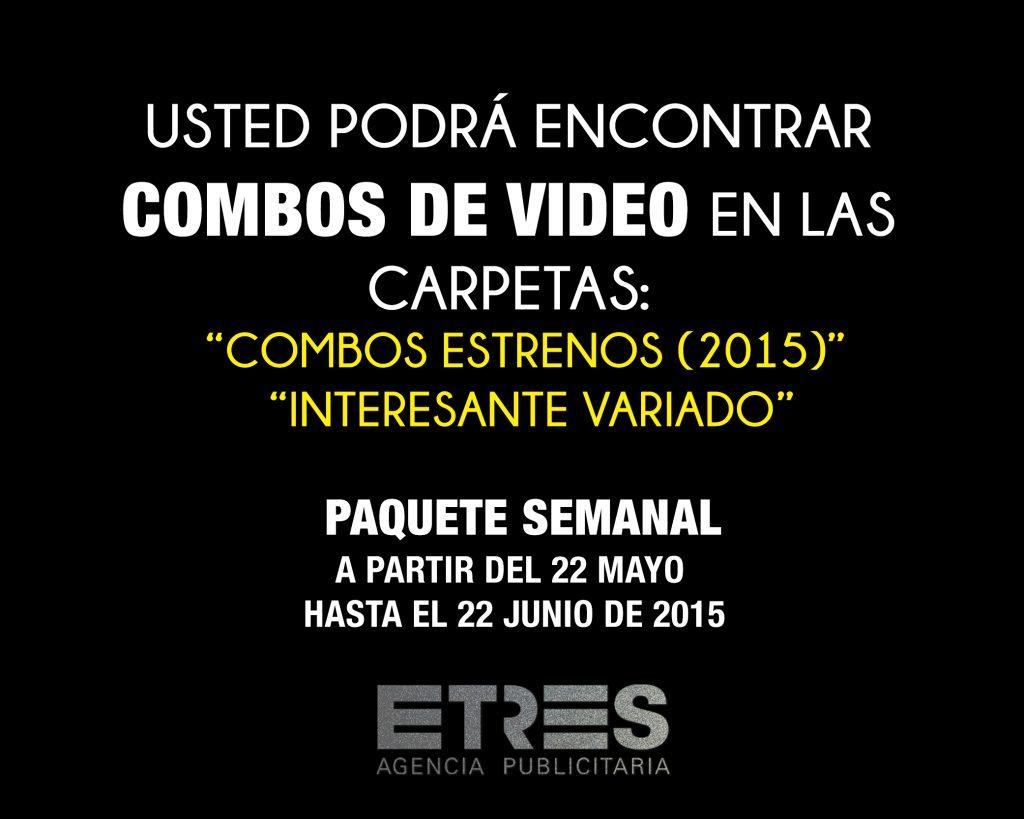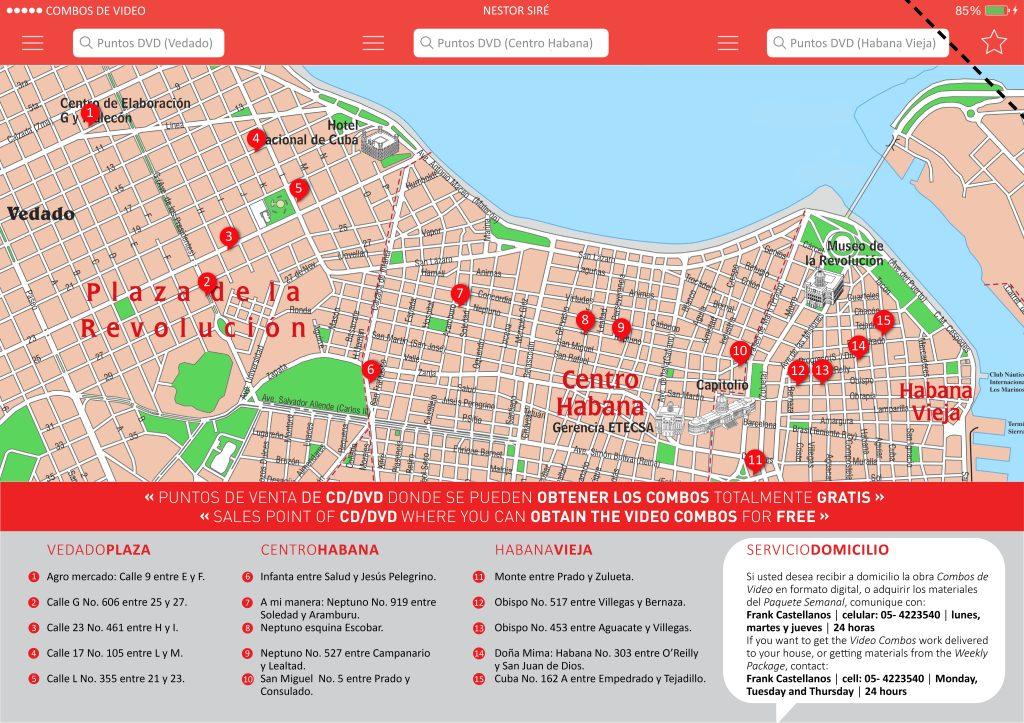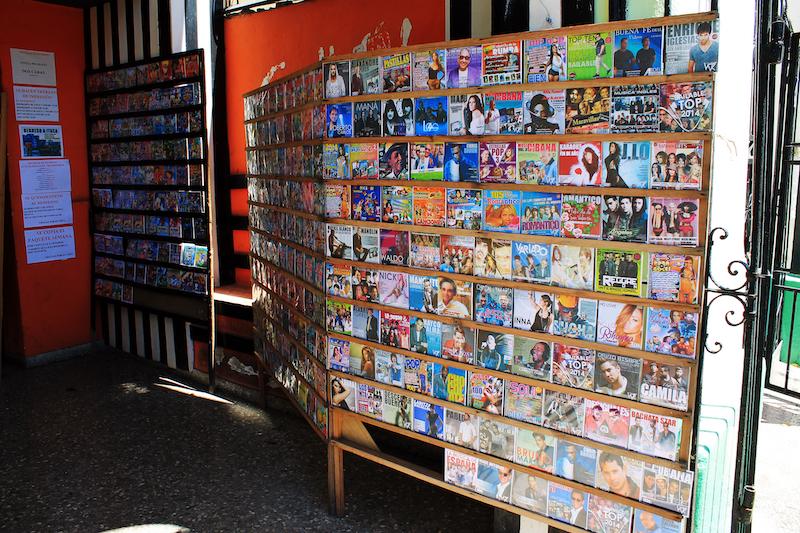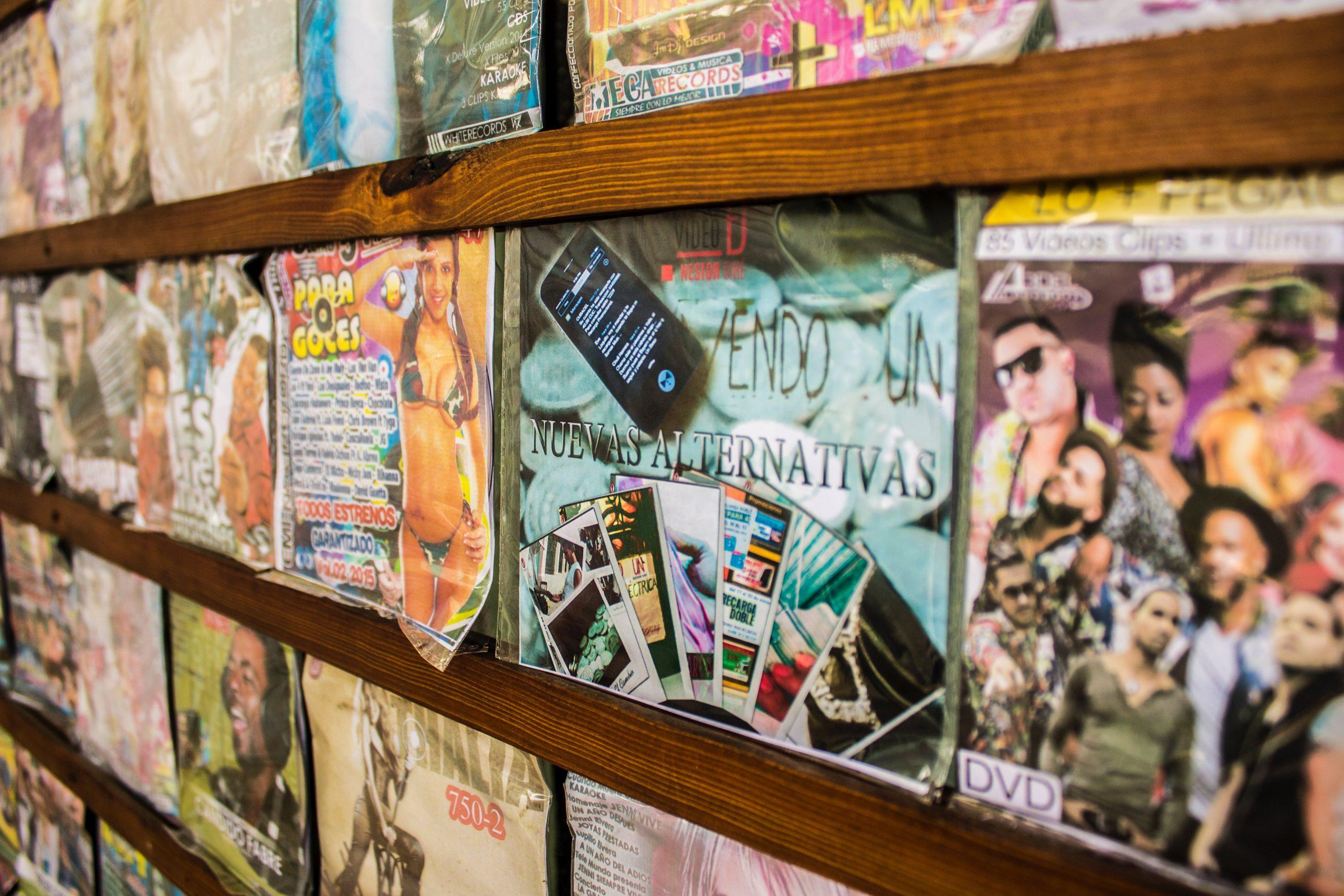
12ma Bienal de La Habana, Cuba [2014]
As part of the project CubaCreativa [2014]
ABSTRACT
Creativity is the ability of human beings to generate new ideas. It tends to flourish in extreme or crisis moments, although not exclusively. When creativity emerges as a response to emergency or scarcity conditions, it acquires predominance in all areas of cultural, economic, and social organization, as is the case in Cuba. This artistic research project focuses on social creativity, heritage, tradition, popular culture, and the culture of survival. Each presentation of this collaborative and multimedia project varies in both format and media, from the organization of a seminar, an academic publication, or an interactive installation.
CubaCreativa [Video Combos] is the starting point of the CubaCreativa project. The work highlights socioeconomic aspects of the Cuban informal economy. It focused on patterns of behavior, habits, and initiatives that constitute alternative creative practices that revolve around survival and are counterposed to governmental powers. Such practices usually take advantage of legal loopholes or find in social permission and veiled political licenses favorable circumstances for their existence.
Intending to connect with people, the artist intervened informal networks as a platform for the circulation of his work, to articulate creative practices and informal ways. He established collaborations with several self-owned spaces dedicated to the sale of content records and also launched in the Weekly Package the four combos that were part of the project. The artist not only used the Paquete as a visibility platform for Combos de Video but also collaborated with its managers for the development of the work, among them Estudios ODISEA (producer of combos), ETRES Agencia Publicitaria and the alternative digital magazine VENUS.
STATEMENT
In the last eight years, I have developed an artistic and research project in different international contexts called CubaCreativa. This project pays special attention to actions and social phenomena that constitute innovation practices. It is interested in documenting the processes or procedures with which creative solutions are reached, given that these in themselves can be infinitely repeated, readapted, and enhanced to the socio-cultural characteristics of each context and its economic circumstances. In that sense, more than the resulting physical object, it is the process and the singularity of social thought that is the focus of interest.
CubaCreativa is also interested in showing local practices and phenomena related to the informal economy, alternative networks, and creative individuals or groups that work beyond the artistic field. Taking Cuban reality as a reference, the project explores, documents, and archives the terms and concepts used in each culture to refer to creative practices. In this way, it makes visible how these creative alternatives are the product of a tradition or have emerged from a culture of survival and how art can intervene in these spaces and creative processes.
CubaCreativa has the potential to grow connected to the daily life of the context in which it is developed. As part of his research, Nestor Siré has formed a photographic and videographic archive in constant development, documenting creative practices worldwide. The artist has given this archive the name iA [Informal Archive]. It is online, in wiki format, and makes social creativity and its global connections visible.
CubaCreativa [Video Combos] is the starting point of the CubaCreativa project. The work highlights socioeconomic aspects of the Cuban informal economy. It focused on patterns of behavior, habits, and initiatives that constitute alternative creative practices that revolve around survival and are counterposed to governmental powers. Such practices usually take advantage of legal loopholes or find in social permission and veiled political licenses favorable circumstances for their existence.
The Cuban political and economic system has gone through multiple stages of crisis since the implementation of socialism in the 1960s. After the fall of the socialist camp in 1990 and the tightening of the U.S. embargo on Cuba, there was a collapse of the economy, known by the euphemistic name of Special Period in times of peace, which led to an unparalleled recession from which the country has yet to recover. As a consequence, creative practices were accentuated and became essential to ensure survival. The skills of repair, reuse, and recycling became enthroned in society, and even institutionalized through a movement called the National Association of Innovators and Rationalizers. In 1992, Verde Olivo magazine, an organ of the Armed Forces, published the book Con Nuestros Propios Esfuerzos, a compendium of everyday life hacks to alleviate the scarcity, precariousness, and absence of industrial products for home use through repair and innovation.
Unofficial activities or activities beyond the reach of public regulation have been present in all economic systems. However, in the Cuban case, there is a notorious gray zone in the practice of the informal economy. On the one hand, the State understands many of these practices as “necessary” in social terms and, therefore, allows their exercise, although it cannot legalize them at the speed with which they develop, or simply the State maintains a complicit silence as long as the practice or trade does not influence the economic-political processes or plans of the State. Consequently, we have a concept to denominate activities that are neither protected nor regulated by the government: we call them alegal practices.
In a context marked by a centralized and planned economy incapable of satisfying the basic needs of society, the black market has grown so much that it has become the place where citizens find everything they require. In this scenario, very well-organized phenomena have emerged and are a natural part of the daily life of Cuban citizens.
Intending to connect with the people where the practices are documented, the artist intervenes in the informal networks as a platform for the circulation of his work. Thus, he articulates creative practices and informal ways.
“Combo” is a lot of several things that come together or are sold for the price of one, as defined in its third meaning by the Royal Academy of the Spanish Language. The sellers of audiovisual materials in Cuba use the term to refer to the operation of grouping digital files under the same thematic criteria. Whether they are movies, documentaries, series, TV shows, anime, manga, video clips, and music, these files are usually pirated. Appropriating a term already established in the cultural imaginary, the artist gathered the documented practices in 4 combos.



Children’s games: He approached the games that have been born in contemporary society, increasingly tending to the pragmatic character of their functioning. In Cuba, the forms of entertainment and children’s collecting operate precariously in public and private spaces.
El Clave: It approaches creative solutions that emerge in the institutional and domestic sphere. These are intended to respond to everyday life problems resulting from the scarcity of resources.
New alternatives: Activities of an economic nature arising under self-employment, whose purpose is to obtain a monetary benefit for those who perform them.
Useful Art: Residual elements of art filter into the everyday environment to satisfy specific needs, fulfilling a new function that does not prescribe its condition of art.
The ways and supports used in pursuit of their circulation are an essential part of the project. The artist established collaborations with several self-owned spaces dedicated to the sale of audiovisual content and music discs in digital formats in the municipalities of Habana Vieja and Centro Habana, and in the central neighborhood of Vedado. These spaces offered the DVDs with Siré’s work free of charge.




It also launched the combos, one per week, in the Paquete Semanal (Weekly Package). Based on piracy, the Weekly Package is an independent alternative to underground circulation that compiles and distributes entertainment materials throughout Cuba. The artist not only used the Paquete as a platform of visibility for Combos de Video but also collaborated with its managers for the development of the project, among them Estudios ODISEA (producer of combos), ETRES Agencia Publicitaria and the alternative digital magazine VENUS.
—
Collaboration: ODISEA Studios, ETRES Advertising Agency, and VENUS Digital Magazine.
